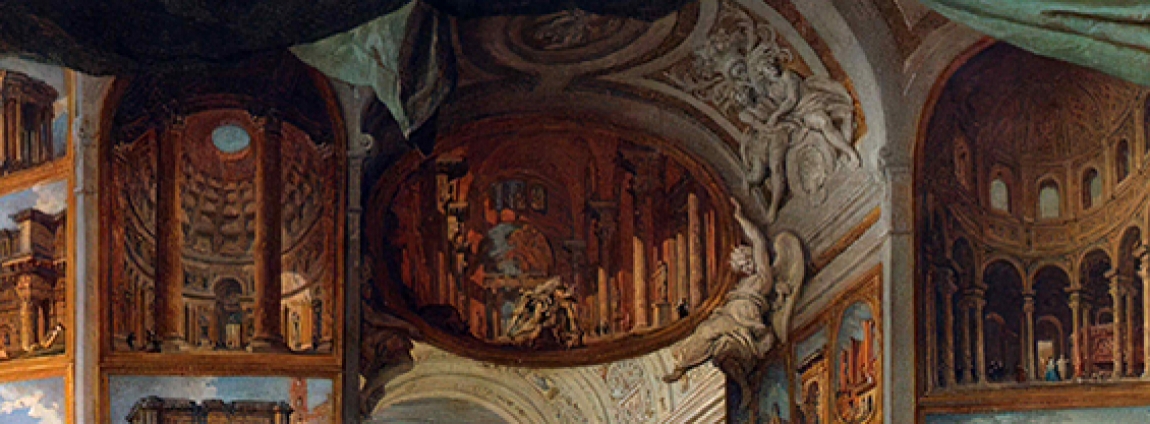Syncretic Scientific Approach in Sacred Architecture during the 18th-c
 Faculty of Literature, “Aula Odeion”, University of Rome “Sapienza” (Rome, Piazzale Aldo Moro, 5)
Faculty of Literature, “Aula Odeion”, University of Rome “Sapienza” (Rome, Piazzale Aldo Moro, 5)  Friday, 7 July 2023
Friday, 7 July 2023 The Italian Society for Eighteenth-Century Studies is pleased to promote Rome as host city for the international SIEDS/ISECS Congress in the Sapienza University of Rome and Rome “Tor Vergata” on 3rd/7th July 2023.
The proposed topic is Antiquity and the shaping of the future in the age of Enlightenment, which is perfectly in line with the spirit of a city, Rome, that embodies the dialogue between Antiquity and Modernity in the 18th century.
The panel 110, Syncretic Scientific Approach in Sacred Architecture during the 18th century aims to welcome proposals that provide original contributions on the adoption of archaeoastronomy in the development of sacred architecture and settlements, reflecting a syncretic approach towards Antiquity and other diverse cultures. Astronomical knowledge was a relevant design tool in Classical times: Vitruvius developed the book IX on astronomy, both for practical and symbolic reasons. It was utilized to identity wind, equinoctial and solstitial directions as well as the quality of lights in interior spaces. Sun was also associated to sacred power. We welcome papers with an interdisciplinary approach on the application of archaeoastronomical practices in relation to the new evangelization requirements promoted by the Catholic Church during 18th century. Of particular interest will be cases in which a scientific syncretic approach informs the architecture, shaped intentionally by the overlapping of local cultures, earlier traditions, and eventually other diverse influences. Examples of syncretism are identifiable both in Europe and in the new world, thanks to the commitment of religious orders. Si- milar phenomena are visible in Rome as well as in California and Texan Franciscan missions: the churches and their placement on the site were designed applying updated astronomical mathema- tics. The sunlight spotlights specific areas on predetermined days and times, synchronizing diurnal rhythms to the principal feast days of the liturgical year and following seasonal changes. In this way, the European catholic believer and the indigenous catechu- men could experience a divinized world, coinciding both with a classical inheritance and the aboriginal calendrical systems.
PANEL PROGRAM AND SCHEDULE
11,30 AM /11,45 AM, Dr. Angela Lombardi, Ph.D. Introduction
11,45 AM /12,30 AM, Dr. Giulio Magli, Ph.D., The light in the temples: Archaeoastronomy as a key to sacred architecture
12,45 AM / 2,00 PM, Lunch break
2,00 PM / 2,20 PM, Dr. Manuel Eduardo Valiente Quevedo, Ph.D., Religious syncretism and architecture. The open-air churches in Mexico
2,20 PM /2,40 PM, Dr. Maria Esther Vallejo Gavonel, Ph.D., Jesuit churches in South America’s urban school complexes: between indigenous syncretism and inter-European dialogue
2,40 PM / 3,00 PM, Dr. Emanuele Gambuti, Ph.D., Symbolic light in the work of Francesco Borromini
3,00 PM / 3,45 PM, Dr. Rubén G. Mendoza, Ph.D., HIEROPHANIES OF LIGHT. Syncretic Architecture and Solar Eucharistic Worship in the 18th and early 19th Century Missions of Las Californias
3,45 PM / 4,00 PM, Dr. Angela Lombardi, Ph.D. / Dr. Iacopo Benincampi, Ph.D., Discussion & Conclusions
Friday, 7 July 2023
Faculty of Literature, “Aula Odeion” University of Rome “Sapienza”
Rome, Piazzale Aldo Moro, 5


